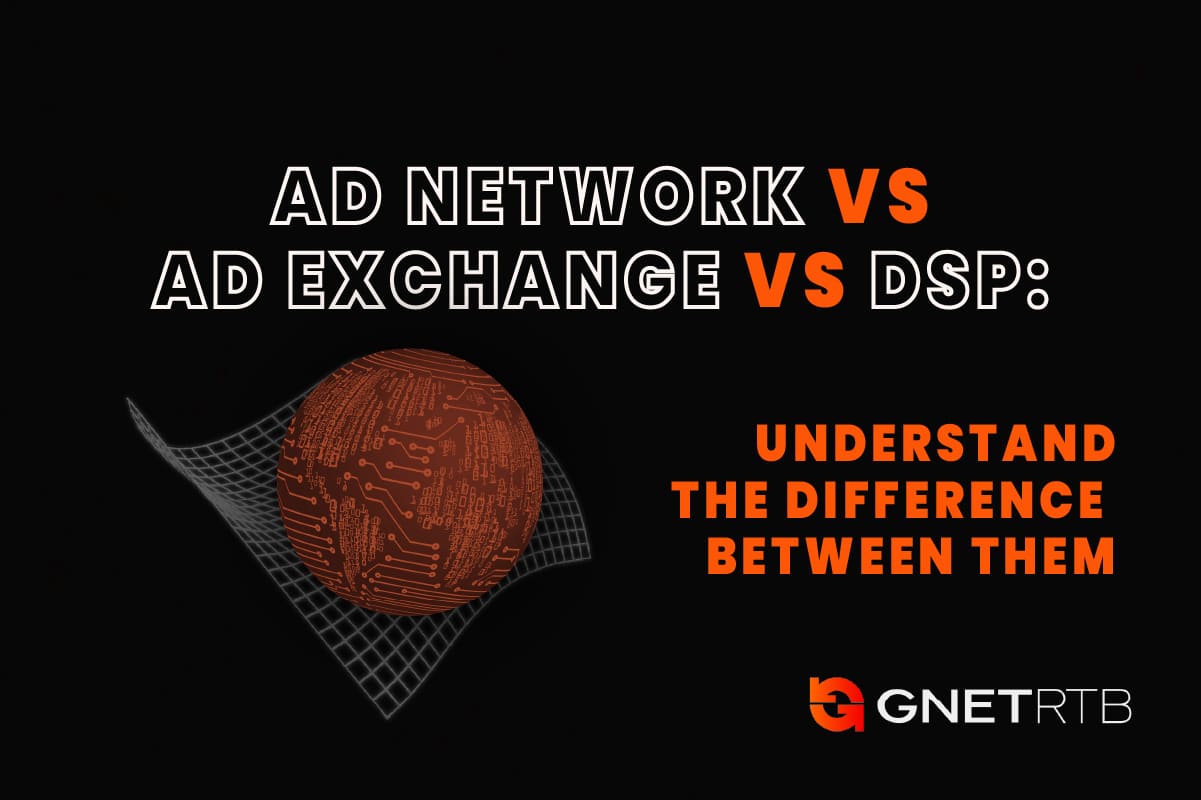Digital advertising has already showed beyond doubt to be able to impact, in new manners, billions of users. About $521.02 billion was spent in this type of media, worldwide, in 2021, through email, search, social, display and mobile.
In an era characterized by digital advertising, the Ad Network, Ad Exchange, and the DSP’s play a key role. That’s why we’ve prepared this article to help you understand the difference between them, how your DSP buys ad inventory and where it comes from.
The historical evolution of digital advertising
Both publishers and advertisers are looking for efficient ways to manage their buying and selling ad space needs. Advertisers have faced the challenge of making their campaigns reach an ever-increasing number of viewers, while publishers want to increase their website revenue. To meet the needs of both, the first ad network was created in the early 1990s.
As more and more websites and apps were launched, the need of connecting millions of advertisers to billions of unsold ad inventories was growing. This paved the way for the creation of the first Ad Exchange, Right Media, in 2005.
This online trading platform facilitated the action of “buying and selling” of a big part of the available ad inventory and brought more transparency to the process. Digital advertising went through a major change, where the internal sales team passed the torch to agencies.
DSPs began to emerge in 2007, with the introduction of RTB in the process. At that time, most bought ad inventories were for desktop web browsers, but this reality began to change in 2014, when smartphones started to rise.
Today, advertisers use a combination of ad network, ad exchange and DSP to buy ad space. Furthermore, they can buy ad inventory programmatically on a variety of devices, such as tablets and smartphones, and media like video ads, native ads, etc.
What is an Ad Network?

An ad network is an intermediary company for buying and selling advertising where publishers sell their premium or remaining ad inventory to advertisers and agencies. First, the publisher classifies his offers based on age, gender, geographic location, etc., while advertisers and agencies get in touch with them according to their needs.
Advertisers have many options to reach the maximum number of their target viewer. The cost of the ad campaign is also reduced because they don’t need to connect with publishers individually.
What is an Ad Exchange?

Ad Exchanges allows publishers, advertisers, agencies, DSPs and SSPs to buy and sell ad space without involving intermediaries. Ad inventory is sold via auction to the highest bidder. RTB enables the entire process to be completed in milliseconds.
Publishers get the greatest value for the ad inventory, according with the market’s price because ads are sold to the highest bidder. Advertisers can set the price they want to pay for the ad space and spend their budget more efficiently.
What is a Demand-side platforms (DSP)?

Advertisers use DSPs to run advertising across many different platforms in a mechanized and optimized way, in order to achieve their marketing goals. Through DSPs, they automatically compare offers from various SSPs, ad networks, marketplaces and others. The RTB process has a decisive influence on the campaign positioning. Everything happens automatically in milliseconds.
Ad Network vs Ad Exchange vs DSPs: main differences
Check out the succinct summary we prepared with the main differences between ad networks, ad exchanges and DSPs.
Ad networks
- Characteristics: intermediary between publishers and advertisers;
- Target users: advertisers, publishers, agencies and DSPs;
- Transparency: depends on the ad network, therefore it is important that advertisers demand clarity about the availability of ad inventory, segmentation data, performance reports, platform fees and agency relationships;
- Pricing: pre-negotiated or determined in the header bidding auction
- Traffic: ad inventory of the platform’s publisher network;
- Campaign optimization: takes time to design;
- Ad inventory quality: normally premium ad inventory, specific viewers segments offered to the sector advertisers;
- Viewers segmentation: predefined segments and advertisers cannot change or update them.
Ad exchanges
- Characteristics: open marketplace for all advertising players;
- Target users: advertisers, publishers, agencies, ad networks, ATDs, DSPs and SSPs;
- Transparency: advertisers know about which publishers they are buying ad space from and publishers know which advertisers they are selling to. Often, the pages on which the ads are running can also be tracked. Some ad exchanges enable advertisers to see competitors’ bids. Publishers can access creatives from different advertisers and their bids.
- Pricing: RTB, so it changes according to bids;
- Traffic: All the many types of ad inventory offered by ad networks, including remaining inventory;
- Campaign optimization: can be performed dynamically (in real timing).
- Ad inventory quality: the premium ad inventory has already been purchased by the ad networks, which resells it;
- Viewers segmentation: Advertisers can more precisely target users by applying custom filters and adjusting parameters.
Demand-side platforms
- Characteristics: platform where advertisers can buy ad space programmatically;
- Target users: advertisers;
- Transparency: advertisers and buyers can choose from who they want to buy ad inventory.
- Pricing: automated real-time bidding;
- Traffic: Plenty of traffic offered by ad exchanges;
- Campaign optimization: can be performed dynamically (in real timing).
- Ad inventory quality: high-quality and ascendable ad inventory, since they can communicate with SSPs;
- Viewers segmentation: Advertisers can target viewers by their demographics, location, browsing behavior, etc.
Conclusion
In short words, despite being regularly confused, ad exchanges and ad networks are not the same thing and each has its own specific roles to play within the programmatic ecosystem.
They can work together, since one ad exchange facilitates the ad space buying and selling from multiple ad networks, while other ad networks buy ad space from Ad Exchange. Likewise, DSPs are also attractive to advertisers due to their public segmentation, bidding system and impression limit. But as ad technology advances, the tendency is that the differences become minimized due to the possibility of integration with DMPs and other technologies.
So, before choosing the best option for you, analyze your needs and budget. If you want to try programmatic advertising and prove its efficiency, or want to get to know a new SSP partner with its own ad exchange technology, GnetRTB may be the best place for you! Access this link and be attended by our expert team.




